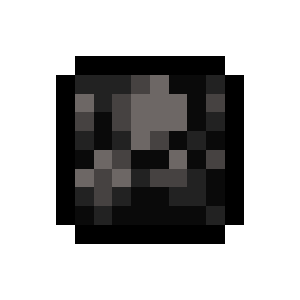

Water cooling is ideal for players who want to start with a small-ish setup to get their feet wet with nuclear fission, or those who just don't want to bother with sodium based cooling.Ī water cooled reactor has a heating rate of 20,000 mB of water for 1 mB of Fissile Fuel burnt. It might be possible to go higher since larger reactors run cooler than smaller ones, but the temperature of such a reactor will be above 850K, well into the warning zone. The actual limit is for reactors with about 75 Fission Fuel Assembly. Water based cooling is sufficient for small setups. See the #Safe operation section for more details and ways around this. The reactor will start to eat up, until meltdown. As a result, its steam tank will start to fill up if the reactor generates steam faster than the turbine consumes it, less coolant will flow back to the reactor, resulting in less and less fresh coolant in the reactor's coolant tank. Once full, it will only consume as much steam is needed to provide power to external consumers. the turbine has an internal energy buffer that will slowly (more or less) fill up.Condensers must be placed at the same level as the Electromagnetic Coils or above them (a single coil being enough for 4 blades, this leaves plenty of room at the same level). The actual value is 64000 mB of water per condenser. The max water output from a turbine can be seen in its statistics tab. the Industrial Turbine must have Saturating Condensers in order to be able to condense steam into water and pipe that water back to the reactor cooling loop.Important (this applies to both cooling solutions):


Regardless of the cooling solution, an Industrial Turbine will be the actual power generator. The damage value of a reactor that has overheated but been stopped on time to prevent a meltdown will slowly go down on its own, no player intervention is needed.Ĭooling a fission reactor and converting the generated heat into power can be done in two ways: water cooling and sodium based cooling. When a reactor reaches critical temperature, it will start taking damage and this value will go up. This indicates the actual structural damage of the reactor. The core's temperature: green (600K 1000K 1200K): the reactor is taking structural damage and will meltdown soon. See the #Water based cooling and #Sodium based cooling sections for more information. 200,000 mB/t for a sodium cooled reactorįor safe operation, the external cooling setup must be able to handle that much heated coolant per tick.For a burn rate of one 1 mB/t, the heating rate is: The actual value depends on the burn rate. The heating rate represents how much coolant is heated up per tick. The theoretical maximum burn rate is 1 mB/t per Fission Fuel Assembly in the reactor, but the effective maximum burn rate depends on a number of factors (see #Safe operation). It can be changed in the reactor's statistics tab. For a newly formed reactor, it is automatically set to 0.1 mB/t. The burn rate is the rate at which the reactor will burn Fissile Fuel. Output ports must be configured to the proper output type by crouching and right-clicking them with a Configurator. Some example control rod setups as seen from the top (C is for Fission Reactor Casing or Reactor Glass, R is for a control rod):Ī fission reactor requires at least 4 Fission Reactor Ports: Maximum control rod density can be achieved by placing them in a checkerboard pattern. Control rods must not touch each other.A control rod is formed by a 1x1 block wide column made of 1 to 15 Fission Fuel Assembly and a single Control Rod Assembly at the top.The interior of the cube can be either air or fission control rods:.The faces of the outer shell can be either Fission Reactor Casing, Reactor Glass, Fission Reactor Port or Fission Reactor Logic Adapter.The edges of the outer shell must be made of Fission Reactor Casing.The structure must be a cuboid of minimum outside size 3x4x3 (along X, Y and Z), up to 18x18x18.4.2.1 Optimal turbine size and boiler size vs.


 0 kommentar(er)
0 kommentar(er)
